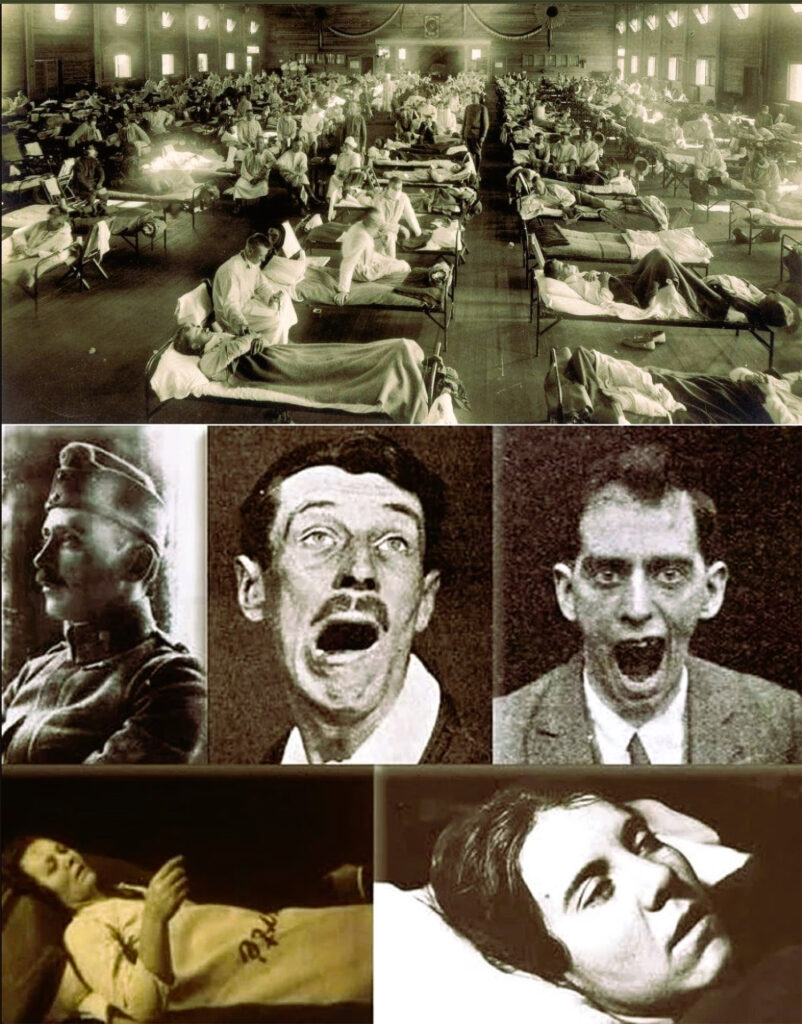
Here’s a polished, expanded version of your content with deeper narrative flow and atmospheric tension, keeping the historical facts intact while heightening the sense of mystery and horror:
😴 The Forgotten “Sleeping Epidemic” — The Plague That Froze the Living 🕯️
Between 1915 and 1926, the world was haunted by an illness so strange, so insidious, that it seemed to steal the very soul of those it touched.
It began innocuously. A mild fever. A sore throat. Fatigue easily dismissed as flu or stress. Doctors barely noticed. Families shrugged it off. No one saw the storm brewing beneath ordinary symptoms.
Then came the horror.
The sick began to change. Eyes that once sparkled with curiosity and life grew distant, vacant. Speech slowed, syllables falling like fragile leaves from a dying tree. Movements became rigid, stiff, almost puppet-like—as if invisible hands had frozen them mid-step. Some patients would sit for hours, staring blankly, lost to the world around them. Others collapsed into unending sleep, their bodies alive but trapped in a limbo between consciousness and oblivion.
Doctors called it encephalitis lethargica—literally, “the sleeping sickness.”
It didn’t just kill. It imprisoned. Over half a million lives were claimed, while countless others survived, awake but trapped inside their own bodies. Unable to move. Unable to speak. Unable to blink at will. Eyes open, but minds silenced. They were alive—but suspended in a waking nightmare.
Hospitals were overwhelmed. Entire wards filled with patients motionless in chairs or beds, staring at nothing. Families watched helplessly as their loved ones slipped further into shadows, strangers to the ones who had once laughed and loved. Medical science could do little. No one knew the cause, no one knew a cure. Treatments were experimental, often cruel, often futile.
And then, as suddenly as it appeared, the epidemic vanished. By 1926, headlines ceased. The world moved on. But the survivors remained—some for decades—still locked in paralysis, bodies betraying minds that remained alert.
Even today, neurologists and historians debate its origins. Was it a virus? An autoimmune reaction triggered by something invisible in the post‑war world? Or a pathogen humanity has yet to understand? Every theory raises more questions than answers.
What endures are the haunting photographs of silent wards, the faded medical reports, and the stories of those who slept yet never truly woke. Accounts tell of children and adults alike, sitting frozen mid-step, unable to respond, yet with eyes that seemed to remember life, laughter, and love.
The sleeping sickness is more than a medical curiosity. It is a stark reminder of how fragile the human brain is, how a single unseen force can hold the mind hostage, and how much of consciousness remains a mystery.
💭 A century later, it stands as one of medicine’s darkest enigmas. A chilling testament to the limits of human knowledge and the secrets still held by the brain—a century-old mystery frozen in time, waiting for answers that may never come.


